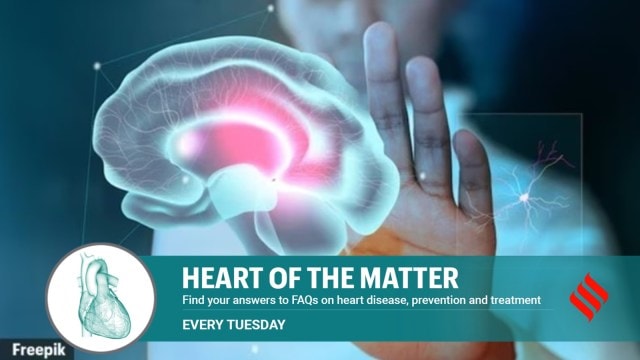- India
- International
Why do brain strokes in young people have a link to this heart problem?
When there are no risk factors or triggers in a stroke patient, an echocardiogram will identify the cause, says Dr Rajiv Bhagwat, interventional cardiologist, Nanavati Max Super Speciality Hospital, Mumbai
 Since the small hole doesn’t cause any problems unless other heart problems or a stroke happens, the problem can be addressed only when discomfort has set in.(Photo: Freepik)
Since the small hole doesn’t cause any problems unless other heart problems or a stroke happens, the problem can be addressed only when discomfort has set in.(Photo: Freepik)Written by Dr Rajiv Bhagwat
I had a young woman in her early 30s come in with a brain stroke without any risk factors of hypertension, diabetes, obesity or family history of chronic diseases. And then we found that her stroke had happened because a blood clot had travelled all the way through a small hole in the heart to the brain. That hole didn’t close at birth and is one of the unknown reasons for strokes in younger adults.
WHAT IS THIS TINY HOLE IN THE HEART ALL ABOUT?
It is a tiny hole between the left and right upper chambers, what we call atria, of the heart. This hole exists in everyone before birth but closes shortly after we are born. In some cases, the hole doesn’t close naturally. This is called Patent Foramen Ovale (PFO). Normally it is symptomless unless it manifests as a stroke in the young adult.
HOW IS IT DIFFERENT FROM A BIG HOLE IN THE HEART?

A big hole or Atrial Septal Defect (ASD) is a failure of the septal tissue to completely form and grow between the atria. Generally an ASD hole is larger than a PFO. The larger the hole, the more likely symptoms are.
WHY DOES A SMALL HOLE TRIGGER STROKES?
In the foetus, oxygen-rich blood travels from the right atrium into the left atrium through the hole and nourishes the baby. Since a baby’s lungs are not used when it grows in the womb, the hole allows the blood to go around the lungs. After birth, the oxygen-rich blood is already in the left atrium. So the baby doesn’t need blood from the right atrium. That’s why the hole normally closes soon after birth. But in one of four babies, the opening never closes.
That’s why people with this tiny hole in the heart may have a higher rate of a stroke. Let’s say a blood clot develops in a vein in the leg and is carried by the blood to the right side of the heart. Normally, this clot would then continue to the lungs but in those with a small hole, it could cross over to the left side of the heart. From there, through normal circulation, the clot could travel to the brain and get lodged there, obstructing blood flow. This results in a stroke.
WHAT ARE TESTS TO DETECT A SMALL HOLE?
An echocardiogram can be done to diagnose a PFO. Sometimes it is too tiny to be seen. Then the cardiologist performs a “bubble test,” during which he injects saline solution or salt water into the patient and studies the heart on the monitor. If a PFO exists, tiny air bubbles will be seen moving from the right to the left side of the heart.
WHAT IS THE TREATMENT?
Since the small hole doesn’t cause any problems unless other heart problems or a stroke happens, the problem can be addressed only when discomfort has set in. So we do cardiac catheterization to permanently seal the PFO. Open heart surgery is no longer used to treat this condition. And you can resume normal life shortly after the procedure with blood thinning medication and cardiac rehabilitation exercises.
Apr 05: Latest News
- 01
- 02
- 03
- 04
- 05





























